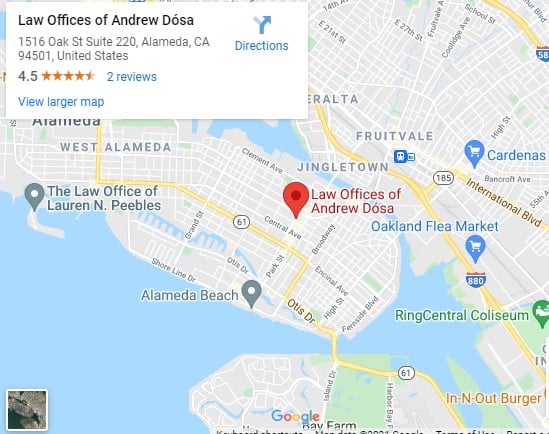Traditionally, drafters of Wills began with an introductory statement by the testator that he is of sound mind and knows the objects of his bounty. The more modern drafting practice does not include (or favor?) these statements, but at the same time, the attestation clause makes broad conclusory statements that, arguably, very few witnesses could make with certainty. How long will the typical witness see the testator and how much will they interact? How could the witnesses “know” the testator had a sound mind? The Probate Code does not require the strong language of the attestation clause. If there is a Will contest, the attestation clause is not evidence of the capacity of the testator–it is hearsay. Thus, you must fall back on the witnesses begin able to testify about what they knew about the testator, what they saw or heard at the signing.
I strongly recommend you have a signing ceremony. First, it is advisable to have witnesses who know the testator. Second, if you can’t get such a witness, take some reasonable amount of time and have the witnesses and testator interact. I like to introduce them and make some connections between them, so they have their own dialogue. Then, I announce that we are having a signing ceremony. This makes it “obvious” the testator has testamentary intent. I have sometimes sent completed Wills to clients with the following instructions, which repeat my ceremony approach.
The Will should be signed by you in the presence of at least two competent adults who will serve as witnesses. The witnesses should watch you sign and then, in turn, sign in each other’s presence as they watch each other sign the attestation clause. (https://elitetrainingcenter.net/) Each of you can leave your initials on the bottom right corner of each of the pages of the Will.
When I have clients sign a Will in my office, I usually describe the process as a “ceremony”. I have the witnesses and the client with me and I ask a series of questions:
- “You have asked me to prepare a Will for you. Is that correct?”
- “I am handing you a document entitled Last Will and Testament. Have you read this document?”
- “Is this your Will?”
- “Does the Will have everything in it that you want in the Will?”
- “Is there anything that has been left out?”
- “Does it accurately state your intent and desire concerning your Will?”
- “If so, then please sign the Will and initial the bottom right corner of each page.”
Then I request that the two or three witnesses watch the client sign the Will. I ask them to sign as witnesses and initial the bottom right corner of each page of the Will. You can follow the line of questions and simply make the statements, i.e., I have had a Will prepared. This document is my Will. It contains everything I want in the Will and leaves nothing out that I want to have in my Will.
When the client signs the Will, the witnesses then read the attestation clause. The clause reinforces the solemnity of the act of your client, and it makes them realize they have evaluated your client’s competence and capacity. If they are called as witnesses, they will either remember the moment, or you can refresh their recollection about the moment, or, at a minimum, get them to authenticate their signatures and also confirm they would never sign a document like that unless what they were declaring was true, or they believe it was true.
Beneficiary Designations and Distributions in Retirement Plans and Life Insurance
The general rule is that you do not put retirement plans or other retirement investments into trusts or Wills. The easy explanation is that retirement investments have limiting requirements that contrast the designed benefit(s) of the investments with what are essentially penalties or increased tax exposure for early withdrawal. There may be good reasons to go against conventional wisdom. But it comes with a price.
When you have the client’s objectives in mind, you can then make an effort to coordinate the retirement benefits and life insurance proceeds with the Will and or Trust(s) in place. Generally, there is nothing tricky about designating beneficiaries of retirement accounts. The client, not the attorney makes the designations. Each retirement investment controls distributions to beneficiaries. Wills do not control any retirement investment. A mindful estate attorney will therefore know the client’s retirement investments and advise him accordingly so that his distribution plan under the Will will not be undermined by the distribution of assets out of retirement investments.
“The estate planning attorney should also be aware of Probate Code Se 100(b), which allows spouses and registered domestic partners (See Family Code Sec. 297.5(a)) to agree in writing to divide their community property on the basis of a non-pro rata division of its aggregate value. This can be a useful tool when, for example, sizeable retirement benefits would pass directly to the surviving spouse or registered domestic partner outside a community property trust, but the individual’s separate property and one-half of the value of the property held in the community property trust would be less than the deceased spouse’s remaining estate tax applicable exclusion amount. By reason to a non-pro rata allocation of their entire can income tax benefits of a rollover by the surviving spouse will property to fully utilize the deceased spouse’s estate tax applicable exclusion amount and [Generation Skipping Transfer] exemption.” (C.E.B. California Estate Planning, Ch. 1, §1.36, p25.)
Titling Assets
Provisions in the Will do not really control the characteristic of an asset and you don’t change the title of an asset by a Will. Assets are controlled by the laws related to those assets, and not by the laws controlling Wills and probate. For example, if you had a client who owned a one-third interest in the property held in joint tenancy, the Will cannot change the title, but the Will can contain a statement that the executor calculates the value of that interest when making the overall calculation of an equal distribution of all assets owned/controlled by the testator. Thus, the testator can control what goes from the estate under the Will and coordinate it with other distributions of his other outside-of-the-Will assets. Considering the overall estate plan, an attorney might advise the client to change the title of some assets and beneficiary designations for life insurance policies and retirement plan benefits, and payable-on-death accounts.
Do you want sample will provision or need help updating Will Documents? Contact The Law Office of Andrew Dosa to get quality estate planning legal advice!





